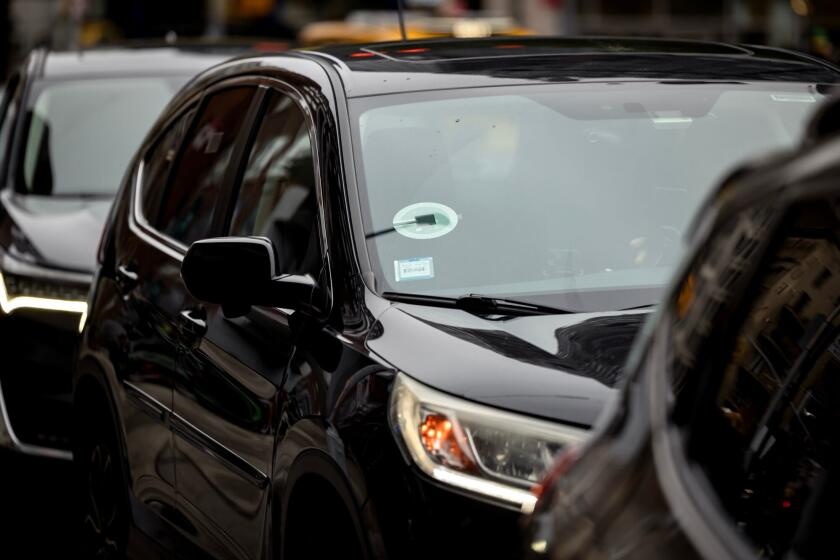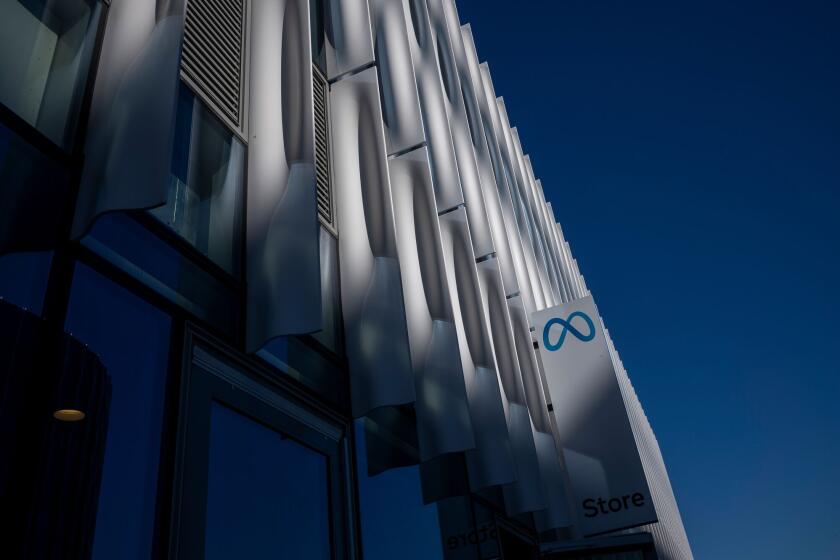The Phone Options for People on the Go : Technology: There are three basic kinds of cellular units. To choose the best for you, consider how and where you will be doing your talking.
- Share via
Welcome to the 1990s, the decade where everybody is on the phone.
The car phone.
So popular are cellular telephones that no matter what hour you travel the freeways, you’re sure to see people with phones to their ears. Those who aren’t holding a phone may have a hands-free phone mount and speaker, so they can keep their hands on the wheel. Or look again: The driver next to you might have a headset--one of the latest trends.
Currently, 5.3 million Americans talk on cellular phones, with the largest usage in New York City and Los Angeles. And, industry analysts expect cellular callers to keep increasing at a staggering yearly rate. Last year, the cellular phone industry reported a 51% growth rate and $4.55 billion in service revenues.
“Cellular has continued to grow at strong, double-digit rates, even though these have not been the best of times economically,” says Robert W. Maher, president of the Cellular Telecommunications Industry Assn. (CTIA), the Washington-based industry’s trade group. The CTIA conducts a nationwide industry survey every six months.
Maher says cellular car phones have become popular because they are “important as a tool for business productivity” and because they assist motorists during emergencies.
There are three basic cellular phones and all operate on radio frequencies. The mobile phone is installed in your car and works only inside it. The transportable phone can be used inside or outside the car; it can be plugged into the car’s electrical system or a rechargeable battery pack and used wherever you wish. The hand-held portables have self-contained batteries and can be used in or out of the car.
Although the majority of cellular users have mobile units in their cars, the fastest-growing segment is the small, self-contained portable phone.
Mobile and transportable phones operate on 3 watts of power and theoretically provide better reception than small portables, which operate on .6 watt. But some portables have accessory units that can boost capacity to 3 watts.
Prices for cellular phones have dropped dramatically. What would have cost $2,500 to $3,500 two years ago is now available for less than $1,200, according to CTIA’s Norman Black. Cellular phones can be found for as low as $100, but they don’t have the high-tech features of the more expensive ones, such as 100-number memory, one-touch redial and alphabetic directories.
Usually, installation and antenna are not included in the price. Installation can run from $100 to $1,000. It costs more to have an antenna mounted directly on the car roof or the trunk and wired to the system than a wireless one on the window, which is attached with double-stick tape. But the wired-antenna unit is said to get better reception.
Prices for cellular service are comparable between both local carriers. There are numerous plans, but basic service costs $45 a month. A call during peak hours, 7 a.m. to 7 p.m., costs 45 cents a minute; during off hours, 7 p.m. to 7 a.m., it’s 27 cents.
“Consumers shouldn’t use a cellular phone like a regular one or they’ll run up astronomical bills,” says Andrew Cohen, president of Beverly Hills Motoring Accessories, which sells many brands of high-end cellular phones. “Call if you’re running late to a meeting or something like that. A half-hour call is $13.50. And you’re charged whether people are calling you or you’re calling them.”
But although cellular car phones offer added convenience and protection for drivers in an emergency, are roads less safe because the phones distract driver-phoners?
A recent study funded by the American Automobile Assn. Foundation for Traffic Safety concluded that “use of cellular phones is a distraction, and it increases the chances you’re likely to miss something.”
Jim McKnight, president of the National Public Services Research Institute in Landover, Md., which did the survey, estimates that cellular telephone use is involved in about 1% of U.S. highway accidents.
For safety reasons, Black said his association recommends that cellular car phone buyers purchase the hands-free options for their units.
“We would never deny that a cellular phone improperly used can be a distraction and can lead to unsafe driving,” he says. “Hopefully by 1992, every unit you look at will come with a hands-free kit.”
Many portable phones, some not much bigger than a pack of 100-millimeter length cigarettes, have vehicle adapters that include a hands-free speaker and microphone and boost the power from .6 watt to 3.
Slimline and compact portable models are offered by most of the name-brand cellular manufacturers--Motorola, Mitsubishi, Oki, NEC, Novatel, General Electric, Panasonic and Fujitsu.
The smallest portable on the market is Fujitsu’s Pocket Commander, which weighs only 10.2 ounces and fits easily in a shirt pocket or purse. It retails for about $1,195.
“Cellular phones have caught on like wildfire,” says Brian Kidney of PacTel Corp. in San Francisco, adding that technology in the cellular field changes so fast that a new phone today can be “a dinosaur” in six months.
PacTel Corp. is the parent company of PacTel Cellular, one of the Los Angeles area’s two cellular carriers. (The Federal Communications Commission permits only two cellular carriers to operate in a city. Los Angeles Cellular is the other.)
Because cellular usage has exploded in the Los Angeles area, companies are trying to improve service by adding new cell sites, through which calls are passed. But competition is stiff, so they won’t give out specific locations or say exactly how many they offer subscribers.
“In each market it’s kind of like Macy’s not telling Gimbel’s,” PacTel’s Kidney says. “We don’t want the competition to know. We have well over 100 cell sites in Los Angeles and are constantly adding them.”
Kidney says prospective buyers should “consider the coverage systems offered in areas where they’re going to use the service. If you live in an area where there’s lots of mountainous terrain, talk to people who have cellular and find out who’s got the best service in that area.”
He added: “The most congested areas are the tight freeway exchanges in Los Angeles, particularly on the Westside. They’re an engineering challenge.”
A representative of LA Cellular says consumers considering cellular phones “should ask the company where coverage is good and bad. It’s bad by the airport. We don’t recommend using cellular there. There are jets flying through the radio waves, so you get interruptions, dropped calls. That’s one of the evils of cellular.”



